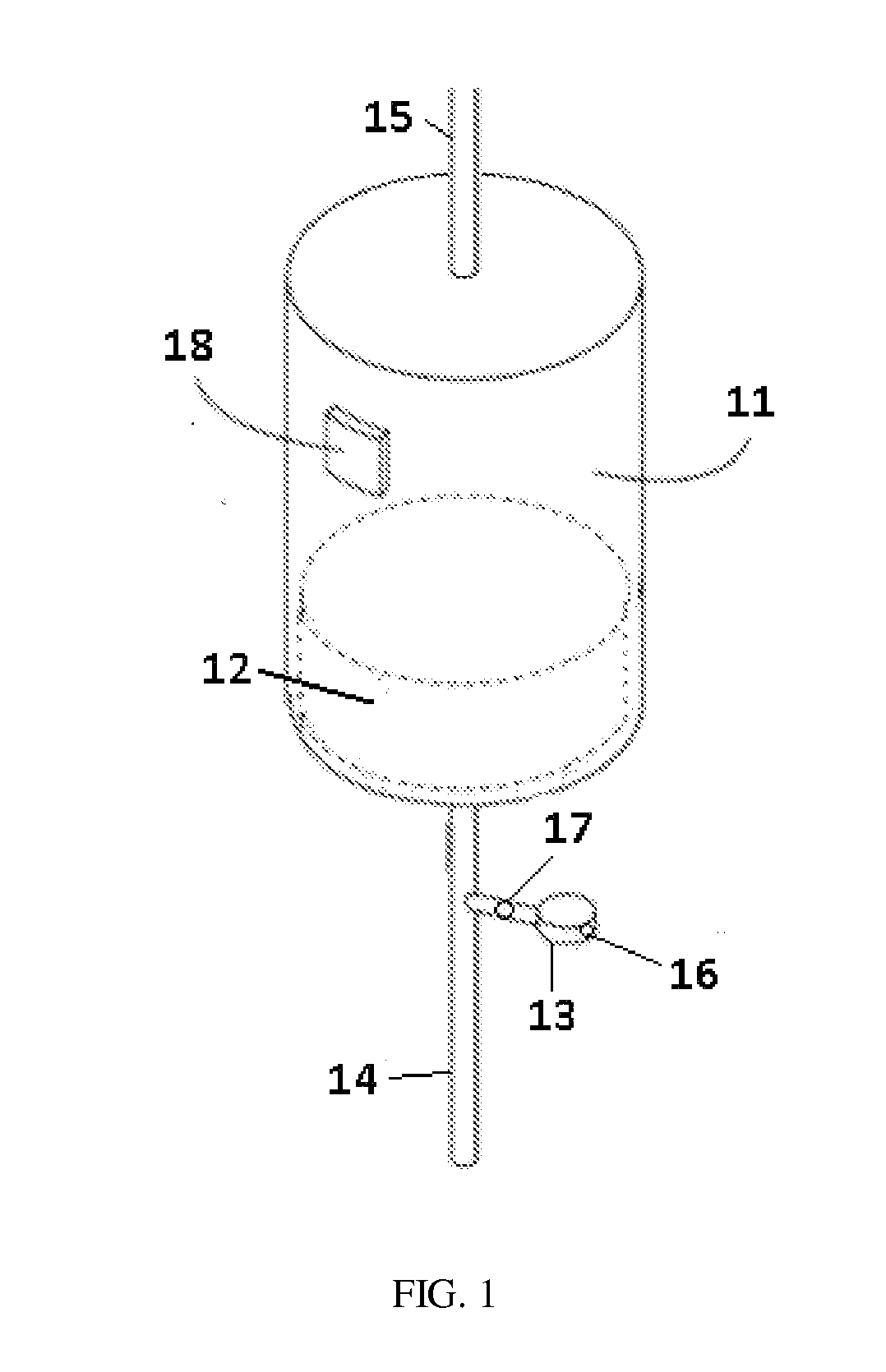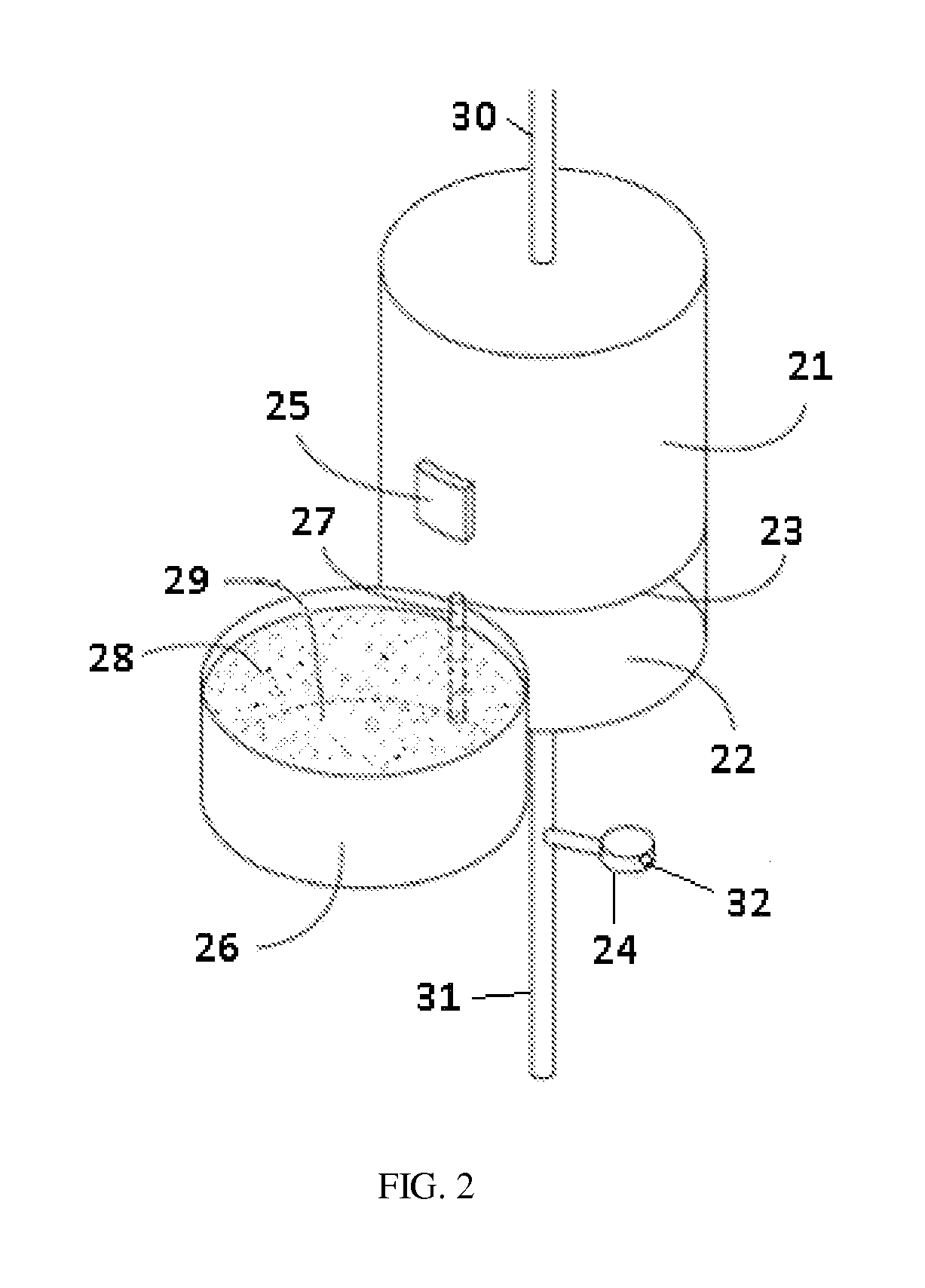Replenisihing urease in dialysis systems using a urease introducer
a technology of urease and introducer, which is applied in the field of urease replacement, can solve the problems of low urease sufficiency of dialysis, inability to replenish, i.e., provide additional or specified amounts of urease to the sorbent, and inability to control the amount of urease added or available for system us
- Summary
- Abstract
- Description
- Claims
- Application Information
AI Technical Summary
Benefits of technology
Problems solved by technology
Method used
Image
Examples
example 1
[0133]An Ace Glass 25 millimeter Adjusta-Chrom Jacketed Column (P / N 5819) was packed with a mixture of 3.001 grams activated alumina (Shandong Luye Co, Lot 20140811-1) and 0.0040 grams of purified urease (Tokyo Chemical Industry, Lot P7DWG-TJ). An additional 9.0070 grams of activated alumina (Shandong Luye Co, Lot 20140811-1) was added to the column and the outlet frit and plunger were adjusted so that no dead space existed above the alumina layer and locked into place. Heated water was circulated through the external jacket of the column to maintain a temperature of 37° C. throughout the experiment. The column was primed by pumping base buffer (115 mMol sodium chloride and 25 mMol sodium bicarbonate) at 15 ml / minute until the liquid level reached the top of the alumina then held for five minute without flow to allow the urease to distribute and bind to the alumina. After the hold period the priming solution flow was restarted at 15 ml / min for an additional 5 minutes to complete the...
example 2
[0134]A urea challenge solution was made containing 400 mMol / Liter phosphate buffer and 400 mMol / L urea. A 1.8 mL sample from the pooled column effluent from Example 1 was mixed with 1.8 mL of the urea challenge solution and incubated at room temperature for 10 minutes. Ammonium levels in the solution were measured using a Nova BioProfile 300 analyzer every 10 minutes over a period of 50 minutes. The ammonium concentration was plotted as a function of time and a linear regression was performed to determine the urease activity of the solution. The urease activity was then multiplied by the total volume of effluent run through the column to determine the total urease units (IU) that migrated during the test. For Example 1 the result was 53 International Units of migrated urease.
example 3
[0135]The test samples collected at 10, 30 and 60 minutes in Example one were used for this analysis. A 0.8 mL aliquot of test sample was mixed with a 0.8 mL aliquot of 400 mM / L phosphate buffer and mixed vigorously. The ammonium concentration was determined using the Nova BioProfile 300 analyzer using the automated machine procedure. The results were compared to a standard curve measure in the same way using standard of known concentration. The ammonium concentration in the test sample is used to calculate the percent urea conversion for the urease / alumina reactor. For Example 1 the result was 53.4% urea conversion.
PUM
| Property | Measurement | Unit |
|---|---|---|
| Concentration | aaaaa | aaaaa |
| Concentration | aaaaa | aaaaa |
| Concentration | aaaaa | aaaaa |
Abstract
Description
Claims
Application Information
 Login to View More
Login to View More - R&D
- Intellectual Property
- Life Sciences
- Materials
- Tech Scout
- Unparalleled Data Quality
- Higher Quality Content
- 60% Fewer Hallucinations
Browse by: Latest US Patents, China's latest patents, Technical Efficacy Thesaurus, Application Domain, Technology Topic, Popular Technical Reports.
© 2025 PatSnap. All rights reserved.Legal|Privacy policy|Modern Slavery Act Transparency Statement|Sitemap|About US| Contact US: help@patsnap.com



